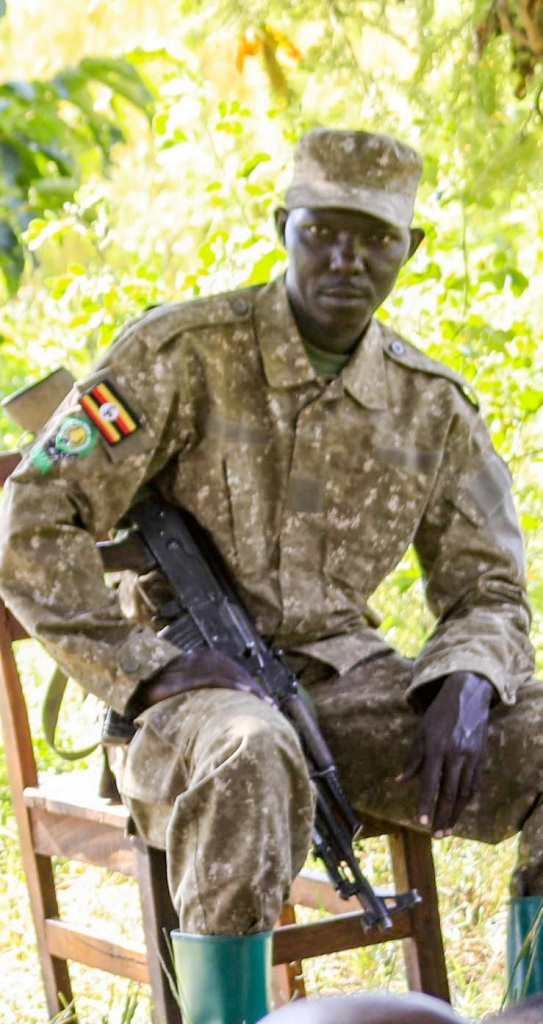(Karamoja) – An armed group of poachers fatally shot Uganda Wildlife Authority (UWA) ranger, Private Jonathan Olara, in Karamoja sub-region on Monday, November 4, 2024. According to UWA, the incident occurred around 3:00 p.m. at the Lomaler camp in Kakwanga Sub County, Karenga District. Private Olara was patrolling within the Karenga Community Wildlife Area when he encountered the poachers, leading to a confrontation that tragically claimed his life.
In a statement issued shortly after the incident, UWA expressed deep sorrow over the loss of Private Olara, a committed ranger serving in the Kidepo Valley Conservation Area (KVCA). The authority highlighted Olara’s dedication to safeguarding Uganda’s wildlife and praised his courage in performing a challenging and often dangerous job. “The risks our staff face daily, particularly in areas prone to illegal wildlife activities, demonstrate the critical importance of UWA’s role in protecting these national treasures,” UWA’s statement read.
UWA emphasized that incidents like this underscore the dangers conservation workers face in areas like Karamoja, where illegal poaching activities persist. The authority reaffirmed its mission to protect Uganda’s wildlife and habitats for future generations, despite these ongoing risks.
Kidepo Valley National Park, where Olara was stationed, spans a semi-arid region bordered by South Sudan to the northwest and Kenya to the east. The park is a significant conservation area with over 77 mammal species and more than 450 bird species, including 50 species of birds of prey, making it a popular destination for bird-watching and safari tours.
| Park Details | Information |
|---|---|
| Location | Between borders with South Sudan and Kenya |
| Distance from Kampala | Approximately 700 km |
| Major Wildlife Species | Over 77 mammal species, 450 bird species |
| Rivers | Kidepo and Narus (seasonal) |
The local communities surrounding Kidepo Valley National Park include the pastoral Karamojong people, known for their cultural similarities to Kenya’s Maasai, and the IK tribe, whose traditional hunter-gatherer lifestyle faces modern challenges. Conservation efforts in these areas are complicated by the presence of armed cattle rustlers and poachers, who often pose threats to both wildlife and park rangers.
To honor Olara’s memory and service, UWA has pledged to intensify efforts to combat poaching and other illegal activities that threaten Uganda’s natural heritage. The agency expressed solidarity with local communities, government authorities, and conservation partners, emphasizing the need to safeguard Uganda’s wildlife for the benefit of future generations. “UWA is working with other security agencies to pursue and bring to justice those responsible for this killing,” the statement added.
In a call for nationwide support, UWA encouraged Ugandans to unite against poaching, highlighting that “Together, we can build a future where wildlife thrives, free from the threat of illegal activities.”
UWA spokesperson Bashir Hangi, in an interview on Tuesday, shared that UWA would cover Olara’s burial expenses and ensure his family receives support under the Authority’s workman’s compensation scheme. Hangi also noted the availability of a scholarship fund for the orphans of fallen rangers, although he acknowledged that no financial assistance can truly replace a lost loved one.
In recent years, UWA has lost at least 17 rangers in similar incidents, reflecting the inherent dangers of protecting wildlife in high risk areas. This figure was disclosed in May 2022 during a report submission to the Parliamentary Committee on Human Rights, where UWA detailed the human rights challenges within its conservation operations.
Kidepo Valley National Park has been a protected area since its gazettement as a national park in 1962, known for its diversity of large mammals and its exceptional bird-watching opportunities. Seasonal rivers Kidepo and Narus flow through the park but dry up in the hotter months, creating isolated pools that sustain wildlife until rains return. This natural habitat supports a unique ecosystem that attracts researchers, tourists, and conservationists alike.




















